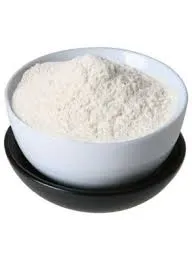
Dec . 17, 2024 16:39 Back to list
Current Pricing Trends for Redispersible Polymer Powders in the Market
Understanding Redispersible Polymer Powder Prices
Redispersible polymer powders (RDPs) have become increasingly popular in various industries, particularly in construction and coatings, due to their exceptional binding capabilities and performance-enhancing properties. These powders, which are often derived from polymers like vinyl acetate, ethylene, and others, are used to improve the strength, flexibility, and adhesion of cementitious and adhesive systems. However, a crucial aspect that industry professionals need to understand is the pricing of redispersible polymer powders, which can vary greatly based on several factors.
One of the primary influences on the price of RDPs is the cost of raw materials. The production of redispersible polymer powders involves the polymerization of various monomers, which are often petroleum-derived substances. Fluctuations in oil prices can directly impact the cost of these raw materials, leading to changes in the price of RDPs. Additionally, environmental regulations surrounding the production and use of these chemicals can add to the overall costs, as manufacturers strive to comply with regulations that promote sustainability and reduce environmental impact.
Understanding Redispersible Polymer Powder Prices
Another important factor influencing the price of redispersible polymer powders is market demand. As global construction markets expand and the demand for high-quality construction materials increases, manufacturers may raise prices to accommodate the growing demand. Additionally, the popularity of eco-friendly and high-performance construction solutions can also lead to increased interest and competition in the RDP market, causing prices to fluctuate.
redispersible polymer powder price

Regional differences also play a pivotal role in RDP pricing. In regions where construction is booming, such as Asia-Pacific and parts of the Middle East, the demand for high-quality additives like RDPs is soaring, which can drive up prices. Conversely, in regions experiencing slower economic growth, prices may be more stable or even decrease due to lower demand.
Furthermore, the packaging and logistics involved in distributing redispersible polymer powders can contribute to the overall cost. RDPs are usually sold in bulk, and the costs of shipping and handling must be factored into the final pricing. Manufacturers that have established efficient supply chains may offer competitive prices, while those facing logistical challenges may see increased costs.
Lastly, the competition among manufacturers can also affect pricing dynamics. As more companies enter the market and innovate their product lines, consumers can benefit from varying price points and options. However, this competition can lead to price wars, which may temporarily lower prices but could be unsustainable in the long term if manufacturers cannot maintain profitability.
In conclusion, the pricing of redispersible polymer powders is a complex interplay of raw material costs, production methods, market demand, regional dynamics, and competition. For professionals in the construction and coatings industries, it is crucial to understand these factors when budgeting and sourcing materials. As the market continues to evolve, keeping an eye on these influences will help businesses make informed decisions to optimize their investments in redispersible polymer powders.
-
Versatile Hpmc Uses in Different Industries
NewsJun.19,2025
-
Redispersible Powder's Role in Enhancing Durability of Construction Products
NewsJun.19,2025
-
Hydroxyethyl Cellulose Applications Driving Green Industrial Processes
NewsJun.19,2025
-
Exploring Different Redispersible Polymer Powder
NewsJun.19,2025
-
Choosing the Right Mortar Bonding Agent
NewsJun.19,2025
-
Applications and Significance of China Hpmc in Modern Industries
NewsJun.19,2025







